Search
for
Sort by
Research
210-240 / 1000+ resultsresearch Perifolliculitis Capitis Abscedens et Suffodiens in an 18-Year-Old Aboriginal Canadian Patient: Case Report and Literature Review
The article concludes that careful examination is crucial for the timely diagnosis and treatment of a rare scalp condition in an Aboriginal Canadian teenager.

research Trichoscopy as an Evaluation Method for Alopecia Areata Treatment: A Comparative Study
Trichoscopy is useful for diagnosing and monitoring alopecia areata treatment.
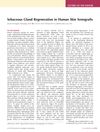
research Sebaceous Gland Regeneration in Human Skin Xenografts
Human sebaceous glands can grow back in skin grafts on mice and work like normal human glands.
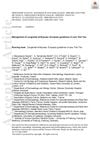
research Management of Congenital Ichthyoses: European Guidelines of Care, Part Two
European guidelines recommend regular eye and ear exams, skin care, vitamin D supplements, and cautious use of medications for managing congenital ichthyoses.
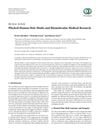
research Plucked Human Hair Shafts and Biomolecular Medical Research
Human hair follicles may provide a noninvasive way to diagnose diseases and have potential in regenerative medicine.
research Effect of P144 (Anti-TGF-β) in an In Vivo Human Hypertrophic Scar Model in Nude Mice
P144® improves hypertrophic scars by reducing size and thickness and increasing elasticity.
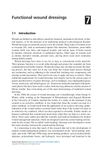
research Functional Wound Dressings: Evolution and Modern Advances
Modern wound dressings like hydrocolloids, alginates, and hydrogels improve healing and are cost-effective.

research Potential Factors Contributing to Androgenetic Alopecia
Male pattern baldness may be caused by factors like poor blood circulation, scalp tension, stress, and hormonal imbalances, but the exact causes are still unclear.
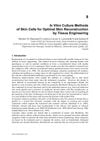
research In Vitro Culture Methods of Skin Cells for Optimal Skin Reconstruction by Tissue Engineering
New methods for growing skin cells can improve skin grafts by building blood vessels within them.
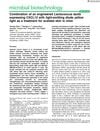
research Combination of an Engineered Lactococcus Lactis Expressing CXCL12 with Light-Emitting Diode Yellow Light as a Treatment for Scalded Skin in Mice
The combined treatment with engineered bacteria and yellow LED light improved wound healing in mice.

research Low-Frequency Electromagnetic Fields Promote Hair Follicle Regeneration by Injecting a Mixture of Epidermal Stem Cells and Dermal Papilla Cells
Low-frequency electromagnetic fields help regenerate hair follicles using a mix of skin cells.
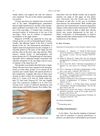
research Correspondence
RAPK is a rare skin disorder with pigmented spots, mainly on hands and feet, starting in youth.
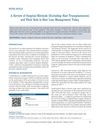
research A Review of Surgical Methods (Excluding Hair Transplantation) and Their Role in Hair Loss Management Today
Surgical methods for hair loss are less common than hair transplants but still useful, especially for scarring hair loss.
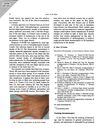
research Teaching Dermatosurgery
Dermatology residents need thorough training in dermatosurgery for better patient outcomes.
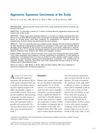
research Aggressive Squamous Cell Carcinomas of the Scalp
Some aggressive scalp cancers are hard to treat and can be deadly, even when removed with specialized surgery.
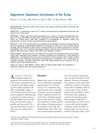
research Aggressive Squamous Carcinomas of the Scalp
Aggressive scalp squamous cell carcinomas have a high death rate and need early, strong treatment.

research Current Protocols: Alopecia Areata Mouse Models for Drug Efficacy and Mechanism Studies
The C3H/HeJ mouse model is useful for studying and testing treatments for alopecia areata.
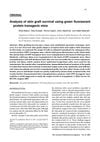
research Analysis of Skin Graft Survival Using Green Fluorescent Protein Transgenic Mice
GFP transgenic mice help study cell origins in skin grafts.
research Feasibility of Repairing Full-Thickness Skin Defects by iPSC-Derived Epithelial Stem Cells Seeded on a Human Acellular Amniotic Membrane
iPSC-derived stem cells on a special membrane can help repair full-thickness skin defects.
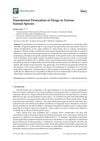
research Transdermal Permeation of Drugs in Various Animal Species
Pig skin is a good substitute for human skin to measure drug absorption, but differences in skin structure and enzymes across species must be considered.
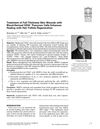
research Treatment of Full-Thickness Skin Wounds with Blood-Derived CD34+ Precursor Cells Enhances Healing with Hair Follicle Regeneration
Blood-derived CD34+ cells speed up healing, reduce scarring, and regrow hair in skin wounds.
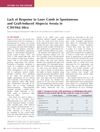
research Lack of Response to Laser Comb in Spontaneous and Graft-Induced Alopecia Areata in C3H/HeJ Mice
The laser comb did not improve hair regrowth in mice with alopecia areata.
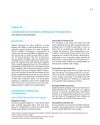
research Complications and Limitations of Melanocyte Transplantation
Melanocyte transplantation can safely restore skin color, especially in stable vitiligo, but must be chosen carefully based on the disease phase.
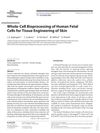
research Whole-Cell Bioprocessing of Human Fetal Cells for Tissue Engineering of Skin
Fetal cells could improve skin repair with minimal scarring and are a potential ready-to-use solution for tissue engineering.
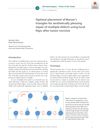
research Optimal Placement of Burow's Triangles for Aesthetically Pleasing Repair of Multiple Defects Using Local Flaps After Tumor Excision
The technique effectively repairs skin after tumor removal, maintaining appearance and function without complications.
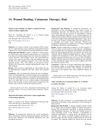
research Wound Healing, Cutaneous Therapy, and Hair Growth
Some treatments like topical oxygen and stem cells show promise for wound healing and hair growth, but evidence for modern dressings over traditional ones is limited.

research Therapeutic Efficacy of Autologous Platelet-Rich Plasma and Polydeoxyribonucleotide on Female Pattern Hair Loss
PRP injections may improve hair thickness and density in female hair loss patients.

research Organoids in Skin Wound Healing
Skin organoids help improve wound healing and tissue repair.
research Keratinocyte Stem Cells: Role in Aging
Aging reduces skin stem cell function, leading to changes like hair loss and slower wound healing.